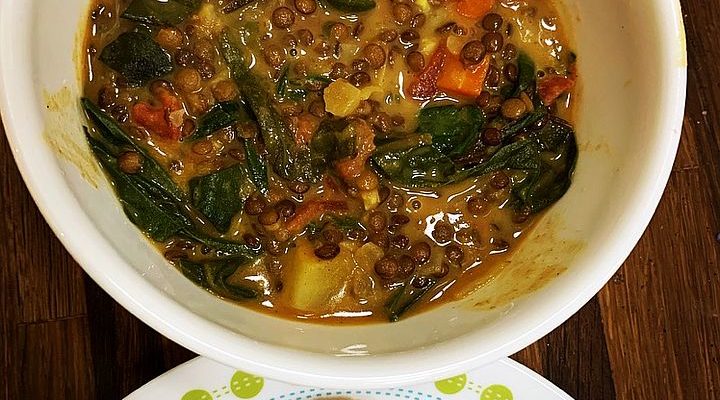This recipe is the universal how-to for sauteed greens. What kind of greens? This will work for kale, collards, beet greens, chard, mustard, turnip greens, radish greens and probably any other greens you can come up with. Although we also put greens in soups, salads and pasta dishes, this is the way we eat most of our greens on the farm. This is not to say there is anything wrong with a pot o’ greens. Especially if you are going to drink the pot likker. But a quick and easy saute is still my go-to.
Prepare the greens
To prepare the greens, wash and squeeze dry. If the greens are bunched, you can dunk and swish them. They’ll be easier to prepare if you leave them bunched. Next, trim off the bottom and then chop the stems. If the leaves are mature, you may want to remove and chop the central rib. I usually don’t bother unless I am cooking large chard or beet leaves where the midrib is quite thick. Keep the chopped stems separate from the leaves, because they will need to cook longer. Chop, tear or chiffonade the leaves.
Do I need to add water?
Young, tender leaves cook quickly. The liquid in the leaf itself is often enough to steam them down. More mature, larger leaves take longer and may require the addition of liquid to steam them so that they soften. Liquid can also add flavor and sweetness. I like to add a splash of orange juice or lemon juice. Apple cider vinegar is nice, too. In the summer, I’ll throw in a chopped tomato as my “liquid”. Water works perfectly well if you don’t have anything else handy. If you add too much liquid, just remove the lid and let it cook off. The greens are done when they have reached the consistency that you like. Underdone greens will be tough. Overdone greens will be mushy.
What do I cook them in?
I use a saute pan. Now that I say that, it seems obvious that one would saute in a saute pan. I like the saute pan because the high sides mean I can shove a lot of greens in there. You will be able to stir them once they cook down a bit. A skillet or frying pan just doesn’t have enough height for bulky greens.
What fat do I use?
This is a matter of personal preference. Often strong personal preference, I might add. Whenever you are cooking on a stove top you want a fat that is stable at high temperatures. I prefer fats that are made with minimal processing such as rendered animal fats (lard, suet, or goose, chicken or duck fat – from pasture raised animals of course) or butter or ghee. Many people like to use olive oil, and that is what I have included in the recipe. Coconut oil is also a great option if that is your go-to. Spinach, chard or beets are the only greens I would saute in butter because I think the flavor is complementary. I personally would not recommend vegetable shortening, vegetable (soybean) oil, canola oil or corn oil as these oxidize readily with heat.
Sauteed Greens - Universal Recipe
Ingredients
- one large bunch greens
- 1-2 cloves garlic, minced
- 1Tablespoons olive oil or other fat
- 1-2 Tablespoons orange juice or other liquid
Directions
- Step 1 Prepare greens by trimming ends and chopping stems and leaves. Keep leaves and stems separate
- Step 2 heat oil in a saute pan over medium-low heat
- Step 3 add the garlic and chopped stems and saute until the stems begin to soften
- Step 4 add the leaves and 1 Tablespoon orange juice and cover, stirring as needed. Add more liquid if needed for the greens to steam slightly
- Step 5 cook until the greens have soften to the desired texture, about 5 minutes




You must be logged in to post a comment.